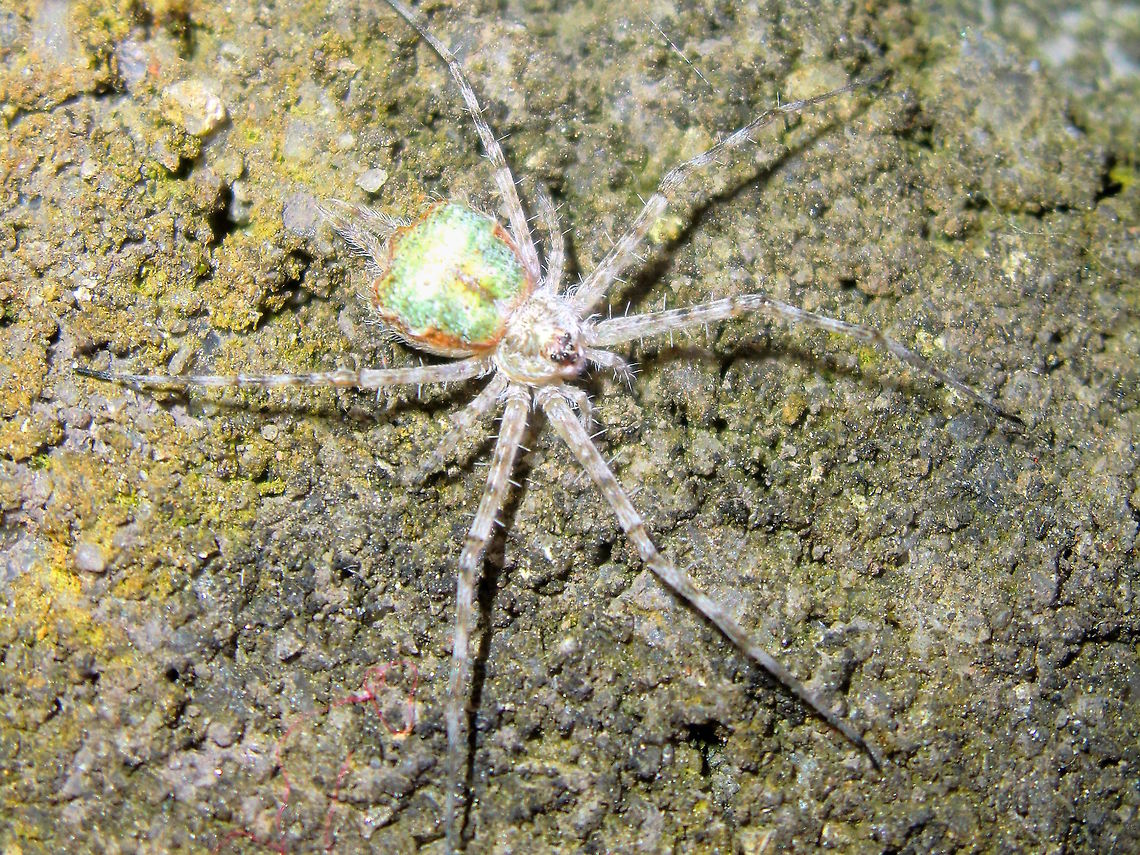
Two-tailed spider (Tamopsis sp.)
A tiny, very well camouflaged, extremely fast spider with a pair of huge spinnerets resembling a double tail. The abdomen was interesting however looking like a piece of greensih-white opal in a gold setting.
Exploring the stone walls under strong night lights at the local school.
Incredibly alert and quick to hide. This group are still being sorted out in Australia and species might not yet be clear. It's interesting to note that not many of this genus are within Victoria or Tasmania
They are also mostly responsible for those egg sacs like perfect spheres on strings often found in eucalyptus tree bark.
Approximately 16mm overall (including legs).
No species identified
The species on this photo is not identified yet. When signed in, you can identify species on photos that you uploaded. If you have earned the social image editing capability, you can also identify species on photos uploaded by others.

comments (10)
Hersilia is not known in the south of Australia, so it could well be a separate species, totally separate from those found in the north, which migrated through India and Indonesia.
The bright light has spoiled the image. You need to get out and find some more.
http://www.european-arachnology.org/wdp/wp-content/uploads/2015/08/061-065_Baehr.pdf
Dave
Posted 9 years ago
Hersiliidae>Tamopsis is certainly recorded all over Aust. (not Tasmania) with about 50 species
http://bie.ala.org.au/species/urn:lsid:biodiversity.org.au:afd.taxon:1e77b63c-414a-4240-a60c-f4f036f17716#
Sorry about the bright light.. don't have many options in that regard.
Posted 9 years ago
I too was looking at tamopsis, but this is not typical, so I don't think it should represent the species.
Dave Posted 9 years ago
Posted 9 years ago
Dave Posted 9 years ago
Dave Posted 9 years ago